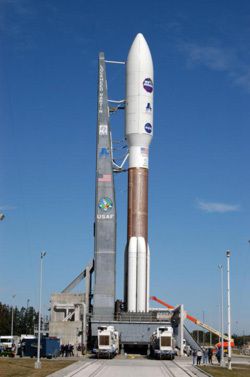-
 Tautomer
Tautomer
-
 Landscape charter
Landscape charter
-
 Galactose
Galactose
-
 Wetland
Wetland
-
 BSC
BSC
-
 Pulse
Pulse
-
 Selectron
Selectron
-
 IANA
IANA
-
 Mesozoic
Mesozoic
-
 Lipid
Lipid
-
 Impregnation
Impregnation
-
 RNA polymerase
RNA polymerase
-
 Lentiginosis
Lentiginosis
-
 HTTP
HTTP
-
 Parasol
Parasol
-
 Diplopia
Diplopia
-
 Ramsar Convention
Ramsar Convention
-
 Accretionary prism
Accretionary prism
-
 Heart attack
Heart attack
-
 Homo erectus
Homo erectus
-
 Yellow dwarf
Yellow dwarf
-
 Voyager 2
Voyager 2
-
 Zodiacal light
Zodiacal light
-
 Lore
Lore
-
 Cecidium
Cecidium
-
 Acidophile
Acidophile
-
 Neutron
Neutron
-
 Emphysema
Emphysema
-
 Leaching
Leaching
-
 Podosome
Podosome
Atlas V
Atlas V is the latest in the family of launchers developed by Lockheed Martin in its EELV programme (Evolved Expendable Launch Vehicle). It is in direct competition with Boeing's Delta 4 for USAF launches et and on the commercial markets is a strong competitor of the European Ariane 5 rocket, the Japanese H2A, the Zenith rockets (Sea Launch) and the Chinese Long Marches.
Its development is based on the Titan and Atlas ballistic missiles decommissioned from active service in the USAF. Starting with the basic version, a two-stage Atlas V capable of putting up to 5000 kg into a geostationary transfer orbit, Lockheed Martin also offers several versions (or configurations) depending on the mission profile.
Thus the Atlas V family will be able to put up to 12,500 kg into geostationary transfer orbit using its Heavy version. The basic Atlas V 401 version will be able to put up to 4950 kg into geostationary transfer orbit.
The 500 series, i.e. with a 5 m diameter fairing and 5 boosters, will be able to put up to 8200 kg into geostationary transfer orbit (GTO).
(Source: Rémi Decourt/flashespace.com)

The Atlas V rocket, latest in the family of launchers developed by Lockheed Martin as part of the EELV programme. (Credits: NASA)
Latest
Fill out my online form.



